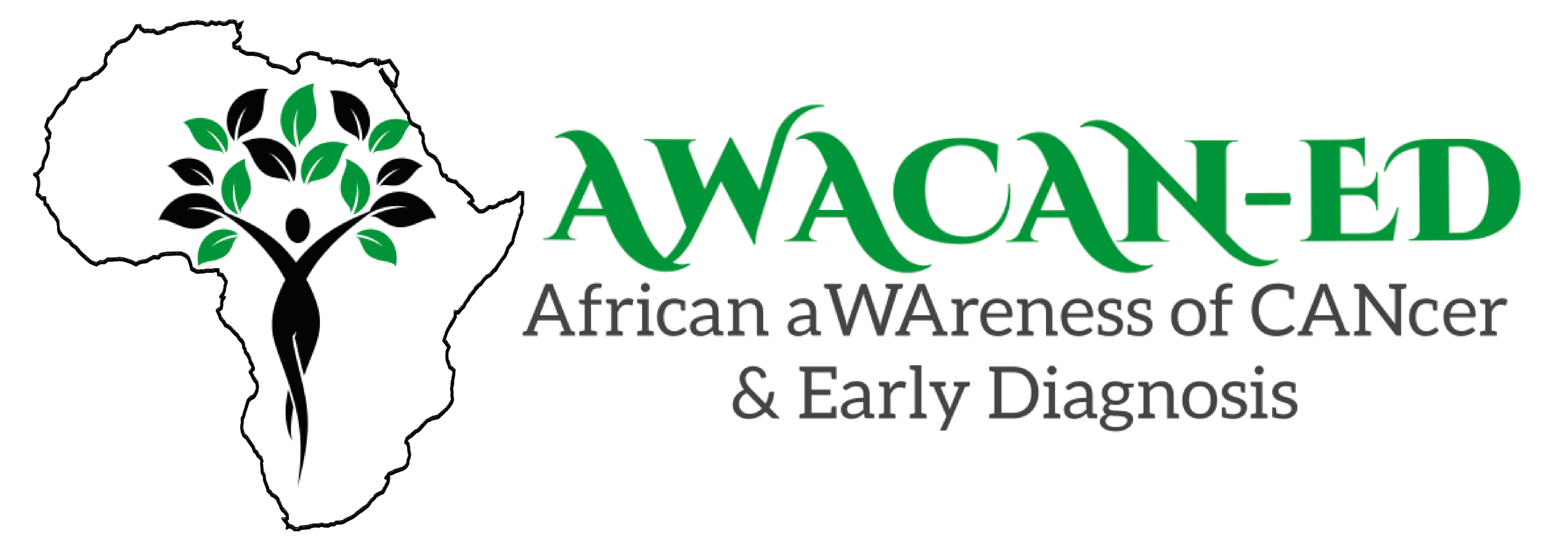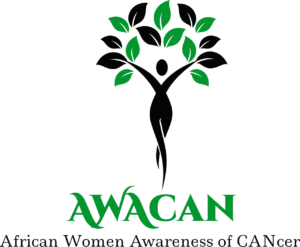AWACAN Previous Work
The AWACAN-ED Global Research Group follows on from our previous African Women Awareness of CANcer (AWACAN) project that involved developing a valid and reliable tool to measure breast and cervical cancer awareness among women in Sub-Saharan Africa.
In Sub-Saharan Africa:
- There is a disproportionately high burden of cancers in women. Breast cancer is the most commonly diagnosed cancer among women in Sub-Saharan Africa and cervical cancer the leading cause of cancer death
- There is a high proportion of infection-related cancers
- Cancer is often diagnosed at a late stage when the cancer is large or has spread.
Read more about the challenge of timely cancer diagnosis in Africa.
The AWACAN research team developed and validated culturally relevant cancer awareness measurement tools to contribute to the development and evaluation of interventions to promote timely diagnosis of cancer in Sub-Saharan Africa, following data collection in SA and Uganda.
The AWACAN tool
Development of the AWACAN breast and cervical cancer tool followed a four-step process of:
- Generating tool items by reviewing the UK Breast Cancer Awareness Measurement (BCAM) and Cervical Cancer Awareness Measurement (CCAM) tools, the Awareness and Beliefs about Cancer (ABC) tool, and studies conducted in Sub-Saharan Africa that used these or other relevant tools.
- Refining items by assessing content and face validity.
- Validating the English version of the AWACAN tool and,
- Developing isiXhosa (for SA) and Acholi (for Uganda) language versions of the tool
Click the links below for further information on:
- the review of Sub-Saharan African studies
- development and validation of the AWACAN tool
- use of the validated AWACAN tool to measure breast and cervical cancer symptom and risk factor awareness and lay beliefs in Uganda and South Africa
Using the AWACAN tool
Collecting data
The AWACAN tool is a 115-item questionnaire that measures women’s awareness of breast and cervical cancer. The tool measures awareness in the following domains: risk factors, symptoms, lay beliefs, confidence in appraisal, help-seeking behaviours, and barriers to health care. The tool also has socio-demographic questions.
The AWACAN tool takes 30 minutes to administer and was designed to be delivered face-to-face by a trained interviewer. We developed the tool to address both breast and cervical cancer in one study, however the tool can also be used to collect information on either cancer alone.
The tool is available in English, IsiXhosa and Acholi.
Locally developed breast images depicting symptoms of: a change in position of nipple, nipple retraction and, orange peel appearance of skin are available for use with the tool (images by Donovan Ward as commissioned by Dr Lydia Cairncross, Groote Schuur Hospital Breast Clinic, Cape Town).
Tool domains
The AWACAN tool domains include:
- Sociodemographic information: 12 questions; 6 of which can be combined into an Asset Index – a single index of economic status.
- Breast cancer risk factors: 19 items, 13 evidence-based and 6 lay belief items, the latter are interspersed throughout the section to function as distractor items.
- Breast cancer symptoms: 16 items, 15 evidence-based and 1 lay belief item, placed within the section to function as a distractor item.
- Help-seeking behaviour after discovering a breast change: 7 items, 5 on where women would seek help after discovering a breast change, and 2 on how soon they would seek help.
- Confidence skills and behaviour in relation to breast changes: 4 items on self-appraisal and prior help seeking.
- Cervical cancer risk factors: 15 items, 11 evidence-based and 4 lay belief items, the latter are interspersed throughout the section to function as distractor items.
- Cervical cancer symptoms: 12 items, 11 evidence-based and 1 lay belief item, placed at the end and as a distractor item.
- Help-seeking behaviour after discovering a cervix/womb change: 7 items, 5 on where women would seek help after discovering a change in their cervix/womb, and 2 on how soon they would seek help.
- Confidence skills and behaviour in relation to cervix/womb changes: 3 items on self-appraisal and prior help seeking.
- Barriers to seeking care: 12 items on potential barriers to seeking care, 6 patient-mediated – emotional items, 3 patient-mediated – practical items and 3 health system items.
Scoring
This document provides guidance on scoring items.
Citing
When you come to use the AWACAN tool, please cite:
“Moodley J, Scott SE, Mwaka AD, Constant D, Githaiga JN, Stewart TS, Payne A, Cairncross L, Somdyala NIM, Walter FM.Development and validation of the African Women Awareness of CANcer (AWACAN) tool for breast and cervical cancer. PLOSOne. 2019”
and add our website to any presentations or publications (www.awacan.online)


